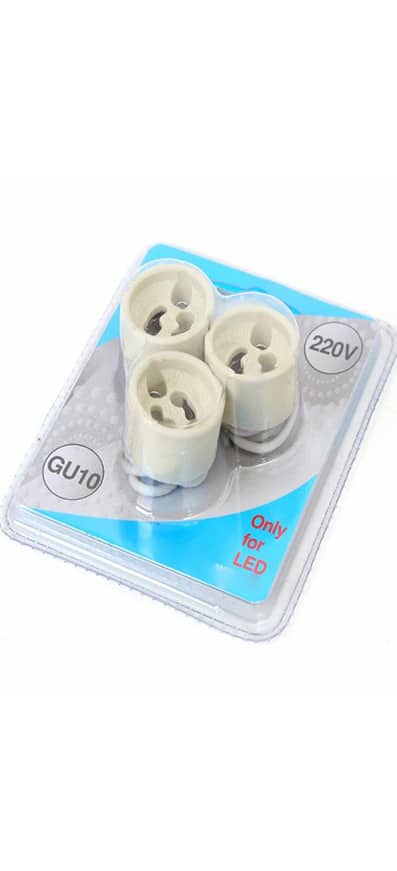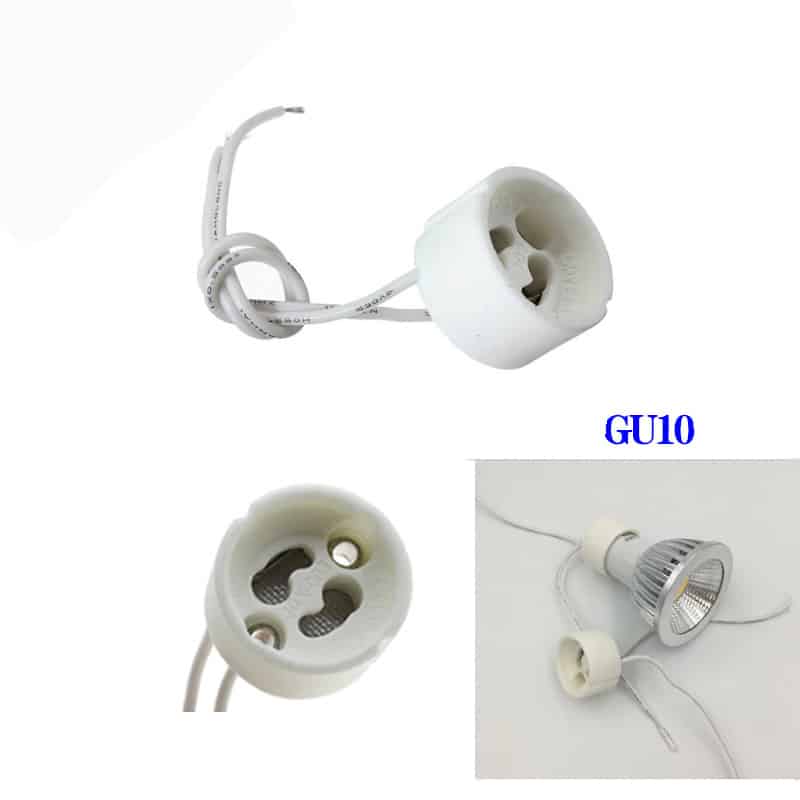The maximum wattage for a GU10 lamp holder depends on the specific model and design of the lamp holder. However, in general, GU10 lamp holders are typically rated to handle wattages between 35W and 50W.
It’s important to check the manufacturer’s specifications for the specific lamp holder to determine the maximum wattage that can be used with it.
Using a bulb with a wattage that exceeds the maximum rating of the lamp holder can result in overheating, damage to the lamp holder, and potentially create a fire hazard.

Can I use a LED bulb with a GU10 lamp holder?
Yes, you can use an LED bulb with a GU10 lamp holder, as long as the LED bulb is designed to be used in a GU10 socket. Many LED bulb manufacturers make GU10 bulbs as a replacement for halogen bulbs. LED bulbs are more energy-efficient, have a longer lifespan, and produce less heat than traditional halogen bulbs.
However, it’s important to check the specifications of the LED bulb to ensure that it’s compatible with the specific GU10 lamp holder being used.
Some lamp holders may have a minimum load requirement or may not be compatible with certain types of LED bulbs, such as dimmable bulbs.
LED bulbs may have different dimming characteristics compared to halogen bulbs, so it’s really matters to use an LED bulb that is specifically designed to work with the type of dimmer switch being used, if applicable.

What is the lifespan of a GU10 bulb?
The lifespan of a GU10 bulb can vary depending on a number of factors, including the quality of the bulb, how frequently it’s used, and the operating conditions of the fixture it’s used in.
However, in general, a high-quality GU10 bulb can have a lifespan of up to 25,000 hours. This is significantly longer than the lifespan of a traditional halogen bulb, which typically lasts around 2,000 hours.
LED GU10 bulbs tend to have longer lifespans than halogen bulbs because they produce less heat, which can cause damage to the bulb over time. It’s important to note that the lifespan of a GU10 bulb can also be affected by factors such as voltage fluctuations, switching cycles, and temperature,
It’s really matters to choose a high-quality bulb and use it in accordance with the manufacturer’s instructions to maximize its lifespan.

How do I change a GU10 bulb?
Based on my experience, To change a GU10 bulb, follow these 5 steps:
- Turn off the power: Make sure that the power to the fixture is turned off at the switch or circuit breaker.
- Allow the bulb to cool: If the fixture has been in use, allow the bulb to cool down completely before attempting to replace it.
- Remove the old bulb: Hold the base of the bulb and gently twist it counterclockwise to release it from the socket. Then, pull the bulb out of the socket.
- Insert the new bulb: Take the new bulb and insert it into the socket. Align the pins on the base of the bulb with the slots in the socket, then gently push the bulb into the socket and twist it clockwise until it’s securely in place.
- Restore the power: Once the new bulb is in place, turn the power back on at the switch or circuit breaker.
It’s key point to note that the specific steps for changing a GU10 bulb may vary depending on the fixture, so be sure to consult the JAMES’ instructions or a qualified electrician if you have any doubts or questions about the process.
